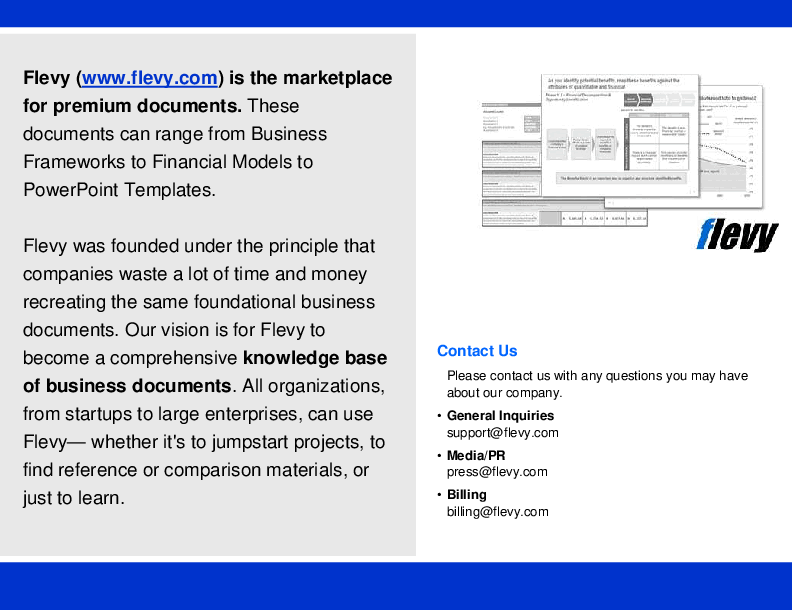TPM Implementation Process Poster (PDF)
PDF document + PowerPoint (PPTX) 5 Pages
BENEFITS OF THIS PDF DOCUMENT
- Provides a clear and concise overview of the 12 steps for TPM implementation, reducing confusion and ensuring that everyone is on the same page.
- Serves as a visual reminder of the key steps, increasing the likelihood that employees and teams will follow through on the necessary actions.
- Supports ongoing training and education efforts by providing a consistent reference point for TPM implementation, even as personnel and teams change over time.
TPM PDF DESCRIPTION
This poster outlines the 12 key steps for implementing Total Productive Maintenance (TPM) in your organization based on the Japan Institute of Plant Maintenance (JIPM) model. The poster provides a clear and concise summary of each step and highlights the importance of each one in achieving successful TPM implementation.
The poster is designed to serve as a quick reference guide for employees and teams involved in TPM implementation, providing a visual reminder of the key steps and their order. The poster can be placed in production areas, maintenance workshops, and training rooms to ensure that everyone involved in TPM implementation is on the same page.
Key activities of the 12 steps of TPM Implementation include:
1. Establishing a company-wide TPM policy:
• Define and communicate the TPM policy and objectives to all employees
• Obtain commitment and support from top management
• Develop a plan to integrate TPM with the company's business strategy
2. Forming a TPM committee:
• Form a cross-functional TPM committee to plan, coordinate, and monitor TPM activities
• Assign responsibilities for TPM implementation to committee members
• Develop a communication plan to ensure TPM activities are understood and supported throughout the organization
3. Conducting a preliminary education and training:
• Provide education and training to employees to develop a common understanding of TPM concepts and terminology
• Develop a training plan for TPM implementation team members and other employees
4. Setting a TPM plan:
• Develop a detailed plan for TPM implementation, including timelines and milestones
• Identify key performance indicators (KPIs) to measure the effectiveness of TPM activities
• Obtain agreement from stakeholders on the TPM plan
5. Launching autonomous maintenance activities:
• Empower operators to take responsibility for cleaning, inspection, and basic maintenance of equipment
• Train operators on equipment care and maintenance
• Establish procedures for operators to report and escalate equipment issues
6. Launching planned maintenance activities:
• Develop a planned maintenance program to supplement autonomous maintenance
• Establish a maintenance schedule and procedures
• Implement a spare parts management system
7. Introducing quality maintenance activities:
• Develop a quality maintenance program to improve equipment performance and reduce defects
• Establish quality standards for equipment performance
• Implement measures to prevent defects from occurring and detect them early if they do occur
8. Introducing focused improvement activities:
• Develop a focused improvement program to identify and eliminate equipment-related losses
• Train employees on problem-solving techniques
• Establish a system for tracking improvement projects and results
9. Introducing education and training activities:
• Develop a training program to enhance employee skills and knowledge related to TPM
• Provide education and training on topics such as equipment maintenance, quality improvement, and problem-solving techniques
• Use on-the-job training and cross-functional teams to reinforce learning
10. Establishing TPM administration systems:
• Establish systems and procedures for TPM data collection, analysis, and reporting
• Develop a system for maintaining and analyzing equipment history
• Establish procedures for equipment modification and replacement
11. Developing safety, health, and environmental activities:
• Integrate safety, health, and environmental considerations into TPM activities
• Develop procedures for safe equipment operation and maintenance
• Implement measures to minimize environmental impacts
12. Implementing TPM activity indicators and evaluating their effectiveness:
• Develop KPIs to measure the effectiveness of TPM activities
• Establish procedures for collecting and analyzing data on KPIs
• Review and evaluate the effectiveness of TPM activities and adjust the TPM plan as needed based on the results.
The poster is available in two distinct themes: a vibrant color scheme and a professional monochrome version. In both formats, the poster comes in a convenient PDF as well as an editable PPTX format, enabling effortless printing on A3/A4-sized paper from standard office copier machines. This versatile resource can be prominently displayed on employee workstations or distributed alongside TPM training materials.
Furthermore, the poster is an ideal supplement to TPM-related training presentations. It serves as a valuable takeaway, summarizing the core principles of TPM and reinforcing the key takeaways from your training.
*Note: The Japan Institute of Plant Maintenance (JIPM) is a nonprofit research, consulting, and educational organization that helps companies increase organizational efficiency and profitability through improved maintenance of manufacturing equipment, processes, and facilities. The JIPM is the sponsoring organization for the TPM Excellence Award, awarded annually to recognize excellence in company-wide maintenance systems. Based in Japan, JIPM is the innovator of methodologies that have been implemented around the world.
The poster is meticulously structured to facilitate easy understanding and quick reference, ensuring that all team members can follow the TPM process seamlessly. It is an indispensable tool for driving continuous improvement and operational excellence within your organization.
Got a question about the product? Email us at support@flevy.com or ask the author directly by using the "Ask the Author a Question" form. If you cannot view the preview above this document description, go here to view the large preview instead.
Source: Best Practices in TPM PDF: TPM Implementation Process Poster PDF (PDF) Document, Operational Excellence Consulting




